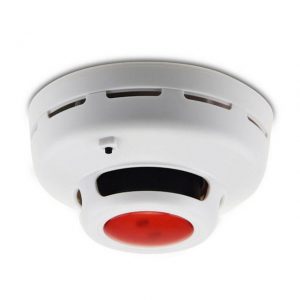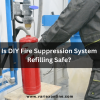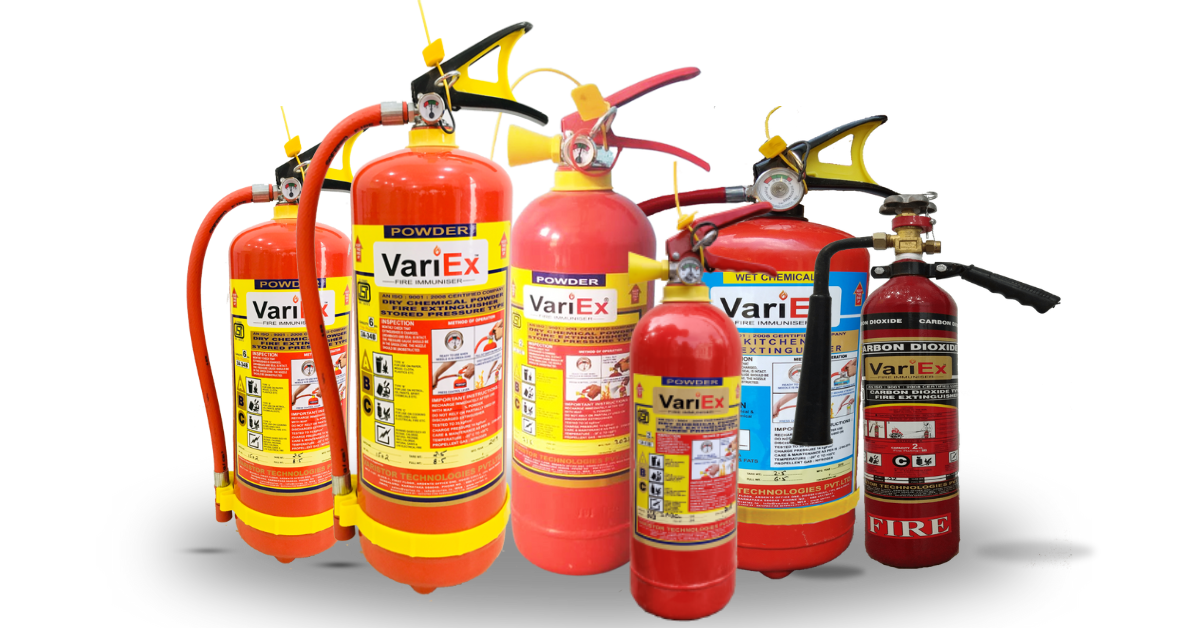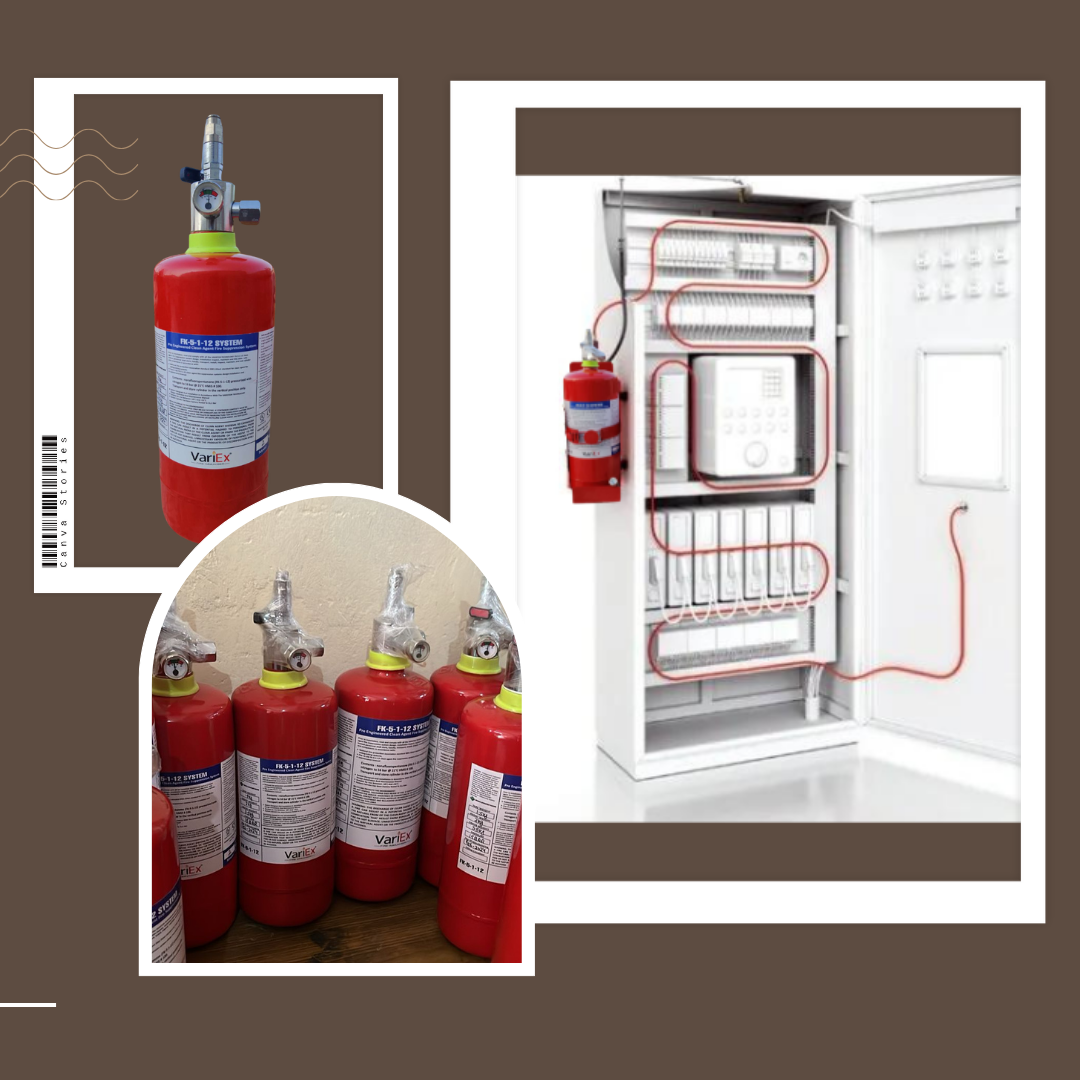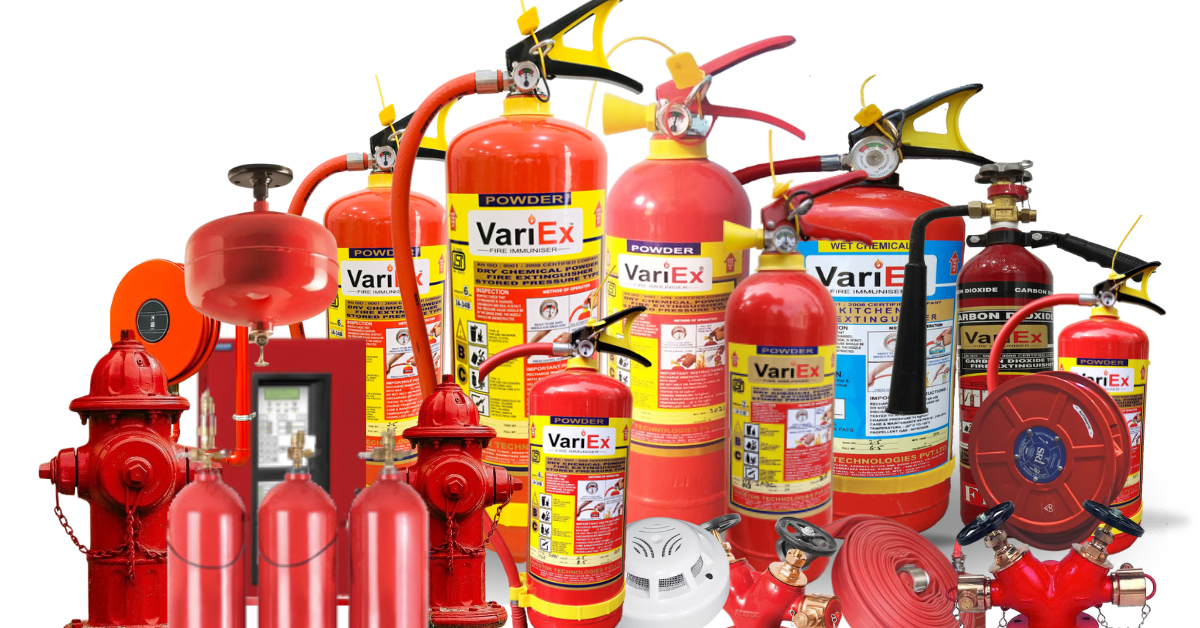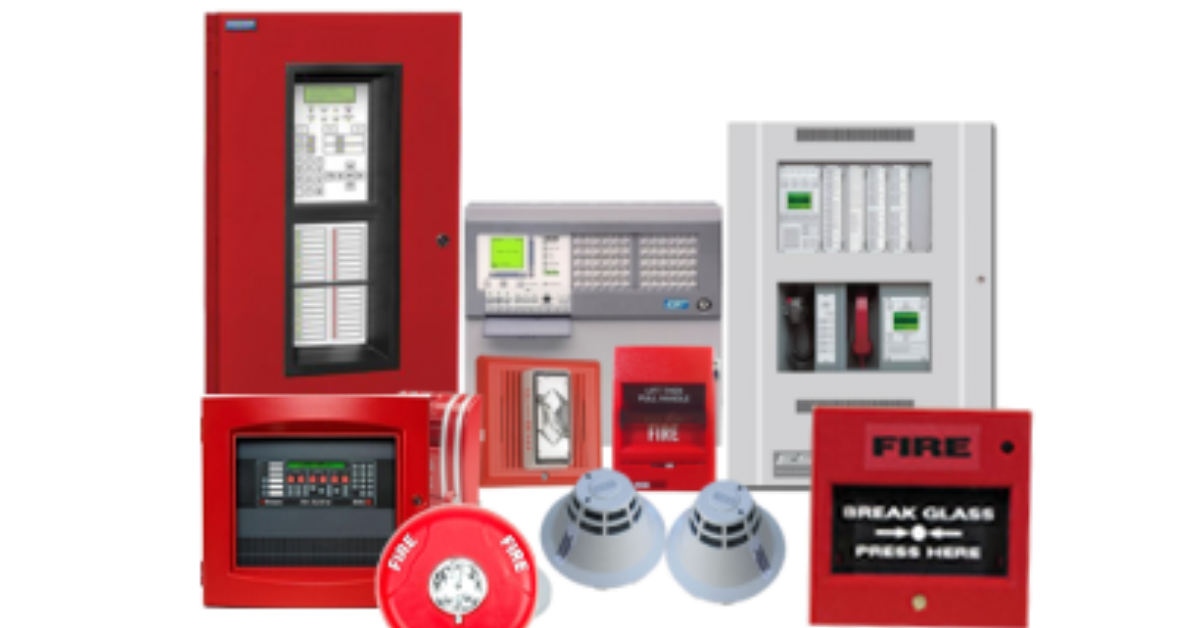![]()
Fire Immuniser
+91-7829629111
Email: info@variex.in
Varistor Technologies Pvt. Ltd.
Block-1, First Floor, Ardente Office One, Hoodi Circle, ITPL Main Road, Bengaluru, Karnataka 560048, IN
What Is Fixed Fire Fighting System
Every year, fire accidents claim countless lives and cause billions of dollars in property damage. To mitigate this devastating impact, organizations have long been relying on fire fighting systems. One such system that has proven to be extremely effective is the fixed fire fighting system. Designed to automatically detect and extinguish fires, this system plays a crucial role in fire prevention and protection. In this article, we will explore what a fixed fire fighting system is, how it works, and its various applications.
Overview and Components
Fixed fire fighting systems are pre-engineered systems installed in buildings or structures to control or suppress fires. They consist of several components that work together to detect and extinguish fires swiftly. Key components of a typical fixed fire fighting system include:
1. Fire Detection System: This system comprises fire detectors, which can be heat detectors, smoke detectors, or flame detectors. These detectors are strategically placed throughout the building to quickly identify the presence of a fire.
2. Alarm System: The alarm system is designed to alert occupants and authorities in case of a fire emergency. It can incorporate audible alarms, visual indicators, and even automatic communication systems to notify the relevant parties.
3. Control Panel: The control panel acts as the brain of the fixed fire fighting system. It receives signals from the fire detectors, monitors the system's status, and activates the necessary actions to suppress the fire.
4. Suppression System: The suppression system comprises various devices, such as sprinklers, gas suppression systems, or foam suppression systems. These devices deploy extinguishing agents to control and extinguish the fire.
How It Works
Fixed fire fighting systems typically follow a four-step process to detect and suppress fires effectively:
1. Detection: When fire detectors sense the presence of a fire, they send signals to the control panel. The control panel analyzes the incoming data and determines if a fire emergency exists.
2. Alarm: If the control panel confirms a fire, it activates the alarm system. This alerts occupants and authorities, allowing them to evacuate the premises and take necessary actions.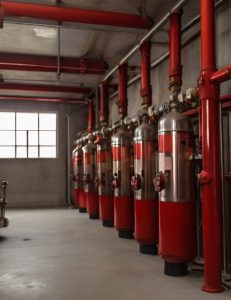
3. Suppression: Simultaneously, the control panel engages the suppression system, which releases the appropriate extinguishing agents based on the type of fire detected. This could involve sprinklers, gases, or foam to effectively combat the blaze.
4. Monitoring and Restoration: Once the fire is extinguished, the system continues to monitor the environment for any signs of re-ignition. It also triggers the necessary actions, such as shutting off fuel sources, ventilation, or initiating system restoration processes.
Applications of Fixed Fire Fighting Systems
Fixed fire fighting systems find applications in various settings and industries, including:
1. Commercial Buildings: Large office complexes, shopping malls, and retail outlets greatly benefit from fixed fire fighting systems. These systems provide early detection, rapid response, and effective suppression to minimize damage and protect occupants.
2. Industrial Facilities: Manufacturing plants, warehouses, and factories often house hazardous materials and machinery prone to fire risks. Fixed fire fighting systems are crucial in preventing the spread of fire and safeguarding valuable assets.
3. Data Centers and Server Rooms: With the increasing reliance on digital infrastructure, data centers and server rooms require specialized fire suppression systems. Fixed fire fighting systems designed for these environments can deploy clean agents that don't damage sensitive electronic equipment.
4. Power Plants: Power generation facilities, including nuclear power plants and thermal power stations, must have robust fire protection systems due to the presence of flammable materials and potential electrical hazards. Fixed fire fighting systems ensure the safety of workers and prevent catastrophic accidents.
Understanding Fixed Fire Fighting Systems
Definition
A fixed fire fighting system is a network of components installed permanently in a building or facility to detect, control, and extinguish fires. Unlike portable fire extinguishers, fixed systems are designed to operate automatically or with minimal human intervention. They are integrated into the building's infrastructure and are often tailored to meet specific fire safety needs.
Importance of Fixed Fire Fighting Systems
The importance of fixed fire fighting systems cannot be overstated. They play a crucial role in:
- Protection of Lives: By quickly suppressing fires, these systems help ensure the safety of occupants in a building.
- Minimizing Property Damage: Fixed systems can reduce the extent of fire damage, saving businesses and homeowners from significant financial loss.
- Compliance with Regulations: Many local and international fire codes require specific types of fixed fire fighting systems in commercial and industrial buildings.
- Business Continuity: By preventing extensive damage and reducing downtime, these systems help businesses maintain operations and protect their reputation.
Types of Fixed Fire Fighting Systems
Fixed fire fighting systems can be broadly categorized into several types, each with its specific applications and mechanisms. Here are the most common types:
1. Sprinkler Systems
Overview
Sprinkler systems are one of the most widely used fixed fire fighting systems. They consist of a network of pipes filled with water and a series of sprinkler heads installed throughout a building. When a fire is detected, the heat causes the sprinkler heads to activate, releasing water over the affected area.
Types of Sprinkler Systems
Wet Pipe Systems: These are the most common type, where the pipes are filled with water at all times. When a sprinkler head opens, water immediately flows out.
Dry Pipe Systems: Used in areas where freezing might occur, these systems contain pressurized air or nitrogen in the pipes. When a sprinkler activates, the air is released, allowing water to flow.
Pre-Action Systems: These systems require two triggers to release water—typically a fire alarm and the activation of a sprinkler head. They are ideal for sensitive environments like data centers.
Deluge Systems: These systems have open sprinkler heads and release large amounts of water simultaneously when activated, making them suitable for high-hazard areas.
Advantages of Sprinkler Systems
- Automated Response: Sprinklers activate automatically, reducing response time.
- Effective Suppression: They can control or extinguish fires before firefighters arrive.
- Cost-Effective: Lower property damage can result in reduced insurance premiums.
2. Water Mist Systems
Overview
Water mist systems use fine water droplets to suppress fires by cooling the flames and displacing oxygen. These systems are particularly effective for specific applications like heritage buildings and electrical fires.
How It Works
Water mist is created by forcing water through special nozzles, producing tiny droplets that can absorb heat and reduce oxygen concentration in the air. This method is efficient in terms of water usage and minimizes collateral damage.
Advantages of Water Mist Systems
- Minimal Water Use: They require significantly less water than traditional sprinkler systems.
- Environmentally Friendly: The reduced water usage leads to lower environmental impact.
- Versatility: Effective in various settings, including industrial, commercial, and residential buildings.
3. Foam Systems
Overview
Foam fire fighting systems are designed to combat flammable liquid fires by creating a barrier that suppresses vapor release and cools the fire. These systems are commonly used in industrial applications, such as oil refineries and chemical plants.
Types of Foam Systems
- Aqueous Film Forming Foam (AFFF): Effective for hydrocarbon fires, AFFF creates a film that prevents re-ignition.
- Protein Foam: Suitable for polar solvents, this foam is made from natural proteins and is biodegradable.
- Synthetic Foam: This type can be tailored for specific applications and is highly effective for a variety of flammable liquids.
Advantages of Foam Systems
- Effective Against Flammable Liquids: Foam can suppress flammable liquid fires more efficiently than water alone.
- Versatile Applications: Suitable for various industries, including aviation, marine, and chemical processing.
4. Clean Agent Systems
Overview
Clean agent fire suppression systems use non-conductive gases to extinguish fires without leaving any residue. These systems are ideal for protecting sensitive equipment, such as in data centers, museums, and hospitals.
Types of Clean Agents
- Halocarbon Agents: These are chemical compounds that effectively suppress fire without harming the environment.
- Inert Gases: Systems that use gases like argon, nitrogen, or carbon dioxide to reduce the oxygen concentration in a room.
Advantages of Clean Agent Systems
- No Residue: They leave no residue, making them ideal for sensitive environments.
- Quick Activation: Clean agents can quickly suppress fires, minimizing damage and downtime.
5. Deluge Systems
Overview
Deluge systems are a type of sprinkler system that releases large volumes of water simultaneously through open sprinkler heads. They are typically used in high-hazard areas, such as chemical processing plants and power generation facilities.
How It Works
In a deluge system, a fire detection system triggers the release of water through all open nozzles at once, allowing for rapid cooling and fire suppression.
Advantages of Deluge Systems
- Rapid Suppression: The large volume of water can effectively combat significant fires quickly.
- Ideal for High-Hazard Areas: Particularly useful in environments where fires may spread rapidly.
Components of Fixed Fire Fighting Systems
Understanding the components of fixed fire fighting systems is crucial for their effective operation. Here are the key components:
1. Detection Devices
Detection devices, such as smoke detectors and heat sensors, are critical for identifying the presence of fire. They trigger the activation of the fire suppression system.
2. Control Panels
Control panels serve as the brain of the fire fighting system. They monitor inputs from detection devices and activate the suppression system when a fire is detected.
3. Piping and Valves
Piping systems transport water or other suppression agents from the source to the discharge points. Valves control the flow of these agents, ensuring the system operates correctly.
4. Nozzles and Sprinklers
Nozzles and sprinkler heads are responsible for discharging water or other agents onto the fire. The design and placement of these components significantly impact the system's effectiveness.
5. Water Supply
A reliable water supply is essential for any fixed fire fighting system. This may come from municipal water sources, tanks, or reservoirs.
Advantages of Fixed Fire Fighting Systems
Fixed fire fighting systems offer numerous benefits, including:
1. Increased Safety
The primary advantage of fixed fire fighting systems is enhanced safety for occupants. These systems can quickly suppress fires, reducing the risk of injury or fatalities.
2. Reduced Property Damage
By controlling fires in their early stages, fixed systems can minimize property damage, which can save businesses and homeowners from substantial financial losses.
3. Lower Insurance Premiums
Many insurance companies offer reduced premiums for properties equipped with fixed fire fighting systems, recognizing their value in reducing risk.
4. Compliance with Regulations
Most jurisdictions require specific fire safety measures in commercial buildings. Fixed fire fighting systems help ensure compliance with local fire codes and regulations.
5. Minimal Human Intervention
Many fixed systems operate automatically, reducing the reliance on human intervention and ensuring a quicker response to fire incidents.
Challenges and Considerations
While fixed fire fighting systems provide numerous benefits, there are challenges and considerations to keep in mind:
1. Maintenance Requirements
Regular maintenance is crucial for the effective operation of fixed fire fighting systems. Neglected systems may fail during a fire, leading to catastrophic consequences.
2. Initial Installation Costs
The initial cost of installing a fixed fire fighting system can be significant. However, these costs should be viewed in the context of long-term savings and risk mitigation.
3. Space Requirements
Certain systems, such as sprinkler systems, require sufficient space for pipes and nozzles. Building design must account for these requirements during construction.
4. False Alarms
Improperly calibrated detection devices can lead to false alarms, causing unnecessary disruption and potential penalties. Regular testing and calibration are essential.
Regulations and Standards
The installation and operation of fixed fire fighting systems are governed by various regulations and standards, which may vary by country and region. In India, for example, the National Building Code (NBC) outlines specific requirements for fire safety systems in buildings. Additionally, international standards such as NFPA (National Fire Protection Association) guidelines are widely recognized.
Key Regulations
- National Building Code (NBC): Provides guidelines for fire safety in buildings, including fixed fire fighting systems.
- Factory Act: Specifies safety measures, including fire prevention and suppression, for industrial establishments.
- Insurance Standards: Insurance companies often have specific requirements for fire safety systems to qualify for coverage.
Conclusion
In conclusion, fixed fire fighting systems are a vital component of modern fire safety measures. By swiftly detecting fires and initiating effective suppression methods, these systems help prevent casualties and minimize property damage. From commercial buildings to industrial facilities and beyond, the implementation of fixed fire fighting systems has become an essential requirement to ensure the safety of people and assets. It is imperative for organizations and individuals alike to recognize the importance of these systems and prioritize their installation to create safer environments for all.
FREQUENTLY ASKED QUESTIONS
A fixed fire fighting system refers to a specialized fire suppression system that companies or facilities install permanently in a building. It automatically detects and extinguishes fires without human intervention.
Fixed fire fighting systems work by detecting fires through various methods such as heat or smoke detectors. Once the system detects a fire, it activates extinguishing agents like water, foam, gas, or powder, which it discharges through strategically placed nozzles or sprinklers to suppress and extinguish the fire.
Fixed fire fighting systems offer several advantages including rapid response to fires, early detection capabilities, immediate suppression action, reduced fire-related damage, protection of human life, and automatic operation even when the building is unoccupied.
Commonly, various environments such as commercial buildings, industrial facilities, data centers, warehouses, server rooms, control rooms, power plants, oil refineries, chemical storage areas, museums, and other high-risk locations use fixed fire fighting systems where fire hazards exist.
There are several types of fixed fire fighting systems including sprinkler systems, deluge systems, foam systems, gas-based systems (such as CO2 or FM-200), powder-based systems, water mist systems, and others. The choice of system depends on the specific requirements and fire risks of the area to be protected.
Yes, fixed fire fighting systems have proven to be highly effective in extinguishing fires. Their automatic activation, rapid response, and targeted suppression capabilities contribute to quick fire control and prevention of fire spread, minimizing potential damage and ensuring safety.
Inspect fixed fire fighting systems regularly according to local regulations and industry standards. Typically, qualified professionals conduct annual inspections to ensure the system is in proper working condition and ready to respond in case of a fire.
Explore our products Range
Final Say
We at VariEx.in or Variexonline.com have mastered the art of designing, installing, inspecting, and fixing automatic sprinkler systems with the help of our in-house team, which is capable of delivering the fire sprinkler services you need, whether large or small and at affordable cost.
To schedule a fire sprinkler installation, or you think our services could benefit your commercial property, contact us online or give us a call at, 7829629111


